Travel Update - Land Ho
Early this morning, we passed the tip of South America, the island known as Cabo de Hornos (or Cape Horn). Our captain, Brandon Bell, took a screen shot of our position early this morning, just after passing by the southern most set of islands. Cabo de Hornos marks the southernmost headland of the Tierra del Fuego archipelago and the northern most boundary of the Drake PassageStrait, connecting the Atlantic and Pacific oceans between Tierra del Fuego and the South Shetland Islands. Located about 100 mi (160 km) north of the Antarctic Peninsula, it is 600 mi (1,000 km) wide.. From the 18th to the early 20th centuries, the waters around Cabo de Hornos were sailed by clipper ships on trade routes. Unfortunately, this area claimed many of these ships due to its notorious weather conditions. The area is known as a sailor's graveyard. We passed by "the Horn" without issue and continued our course to the Le Maire Strait (situated between Isla de los Estados an the Argentine portion of Tierra del Fuego). By mid-day, we passed through the Le Maire Strait, leaving the Drake PassageStrait, connecting the Atlantic and Pacific oceans between Tierra del Fuego and the South Shetland Islands. Located about 100 mi (160 km) north of the Antarctic Peninsula, it is 600 mi (1,000 km) wide. and entering the Atlantic Ocean. We will spend the day traveling along the coast of Argentina before entering the Straits of Magellan sometime Friday morning or mid-afternoon.
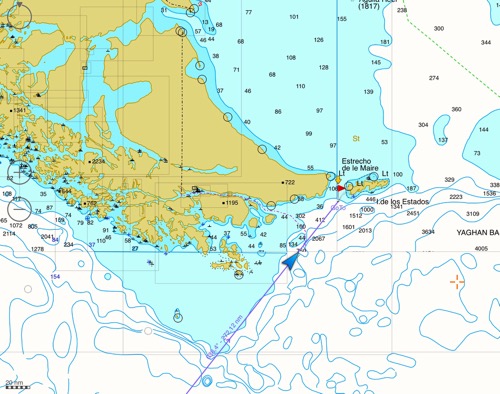
Packing Update
Lab rooms are looking a bit empty these days. All of the pumps and large pieces of equipment have been removed from counters and boxed up for shipment or storage. Smaller items like bottles, pipettes and filters are packed into boxes and moved to the hold. All of these supplies will be packed into large pallet boxes that will be off-loaded from the ship early Saturday morning and prepared for their shipments to the U.S.
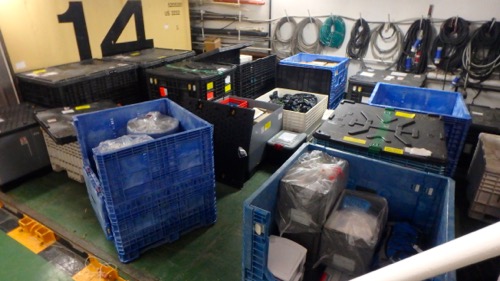
The trace metal lab or bubble is gone. The bubble was torn down before dinner yesterday. The aft dry lab looks completely different without the plastic bubble that housed the trace metal equipment for five weeks.
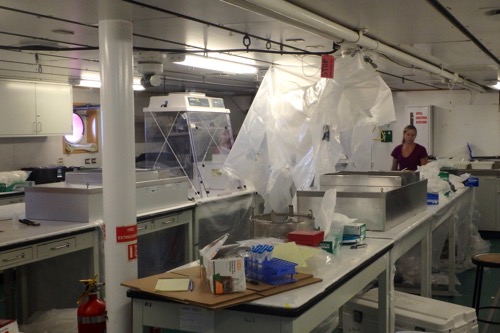
Engine Room
It is tradition on the RVIB Palmer to open the engine room for a tour on one of the last few days of the trip. Yesterday, 2nd engineer Richard Johnson, took a handful of science team members below deck to learn more about the engineering department on the RVIB Palmer.
Richard has been working with Edison Chouest Offshore (ECO) for the past 9 years, but he started working on ships approximately 40 years ago. For this research cruise, Richard works alongside Chief Engineer JP Pierce, 1st engineer Carl Largan, 3rd engineer Steve Buker (a Massachusetts Maritime alum) and 4 oilers to maintain the ship's engines and other equipment. Remember, once the engines were turned on in Punta Arenas in early September, they run until non-stop until we are again at the dock. The engines and generators work 24 hours a day, 7 days a week throughout the trip. The constant upkeep is a vital part of a successful research cruise.
Main Control Room
Richard started the tour in the main control room where monitors regularly update the fluid levels, pressures, and other conditions related to the engines, generators, water-makers, etc. The main control room is also an ideal location to begin because it is quiet and Richard could go over the route for the tour. Beyond the doors of the main control room, the generators and engines produce enough noise to drown out conversation. Richard made note of some interesting facts before we started the tour. For instance, the RVIB Palmer is fitted with over 75,000ft (14 miles) of pipe. In the engine room, these pipes are color coded according to the type of liquid. There are 2,700,000ft (511 miles) of wire running through the ship and approximately 4,000 light bulbs on the ship. These numbers are impressive. What I found truly impressive was the size and cleanliness of the engine room compartments. It is obvious that the engineering department work very hard to maintain these machines and the many other pieces of equipment in their charge (water makers, glycol heating systems to heat the main deck, bow and stern thrusters, fuel purifiers, etc.)
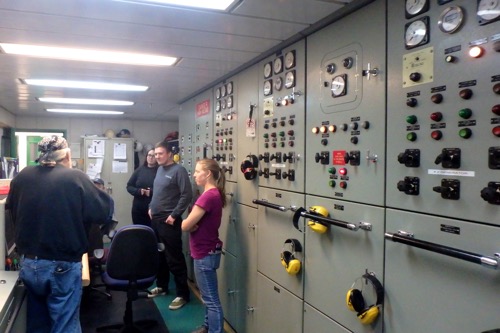
With ear protection firmly in place, we entered the engine room area and went to the machine shop. This area is used by the engineers to work on repairs. Welding equipment, powerful drills and other tools are scattered about the area. The RVIB Palmer is generally equipped with one full year of parts at all times, but, like any piece of machinery, repairs are sometimes necessary. The machine shop provides a location for those repairs or for fabrication of necessary items.
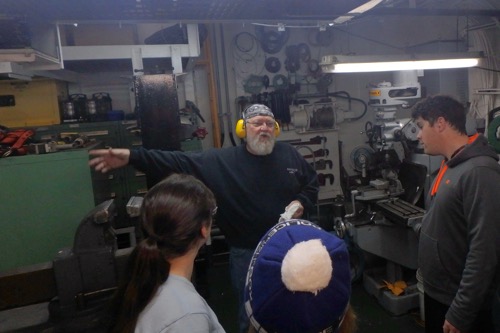
Caterpillars on a Ship??
The four main generators are located on the first level of the engine room. Two generators are used at a time in order to provide power for the ship. One of these massive generators could hold the entire load, but two are generally used. The working generators are rotated to maintain equal work hours. There is an additional emergency generator on the 04 deck in the event of a total power loss.

You must descend one more level to reach the main engines. Here, four Caterpillar 3608 diesel engines sit two per side. These engines produce 13,000 horsepower to power the ship. The engines stood well about my 5'7" height when I stood next to them. The RVIB Palmer generally uses two of the four engines while underway. The two engines will each generate power for the two shafts that spin the propellers. When more power is needed, all four main engines are used. In this case, two engines will power each shaft to increase the power. This scenario is used during ice breaking operations. In open ocean, however, two engines are used in order to conserve fuel.

These engines are maintained throughout the trip, but receive a more detailed service call once every two years. In March, while in dry dock in New Zealand, the ship will undergo a 25-year maintenance, which includes detailed work.
Shaft Alley
As you continue to move aft (towards the back) in the lower level of the engine room, you reach a room called shaft alley. This is the compartment that holds the two main shafts for the ship. The shafts are housed within a casing (the black and yellow striped cylinder in the picture below). These shafts spin at 142 rpm, while the engine spins at 900 rpm.
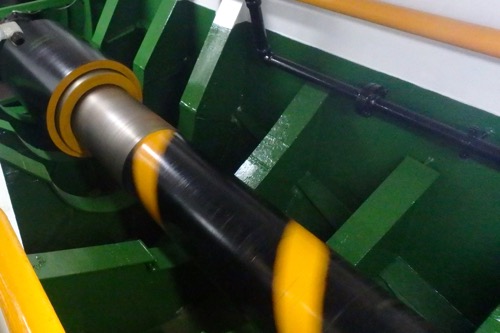
The shafts provide torque for the two large propellers. Each propeller consists of four blades totaling 13.12ft in diameter. These propellers sit approximately 15ft below the surface of the water.
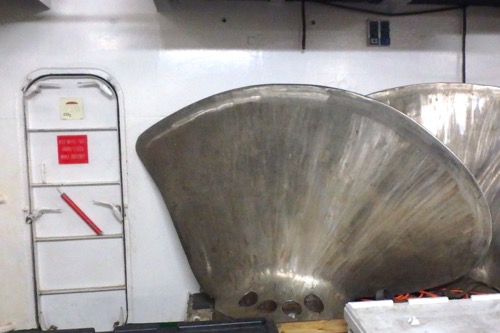
I have been anticipating the trip to the engine room for quite some time. You do not truly understand the size of the ship until you see the size of the engine room and the machines that provide the power. A special thanks to Richard and JP for taking the time to show us around!
Love From Little Landlubbers
Last, but not least. Ross (and his sister Sarah) live in Richmond, KY. Ross made this picture of SpongeBob just a few weeks before my trip. Thank you Ross!
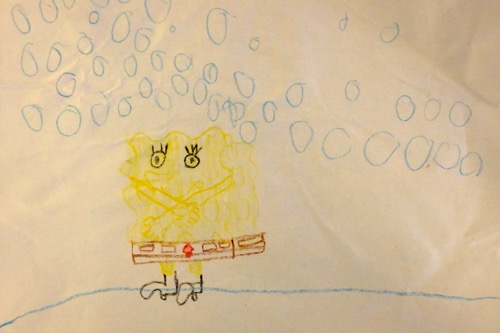


Comments